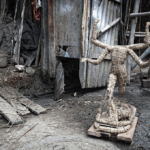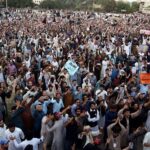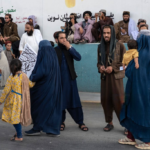This post is written by Priya Goel, a student of Lady Shriram College for Women in New Delhi.
In a country like India, where the term ‘secular’ is enshrined in the constitution but the real daily life practices of the religious sects of the country speak otherwise, it is gullible to interpret the reasons of all forms of violence witnessed in the country to be communal hatred and religious fanaticism. Instances of religious violence, mainly stem, from the religious communities of Hindus and Muslims, and Sikhs, to a lesser extent. Many people believe that religious extremism in India penetrated its roots from the Indian Independence Act of 1947, which further amplified with the drift in political ideologies, undefended acts conducted by cross border terrorist networks and the global ‘jihadists’.
However, unfortunate incidents of violence involving religion aren’t the stories of post independent India alone. Even in the colonial India, Indian Rebellion of 1857 (also called the Sepoy Mutiny), Partition of Bengal in 1905, Moplah Rebellion of Kerala in 1921 are some instances which prove that regional religion boundaries have had a long predisposition in the country. Yet the large scale religious violence and riots in modern India have occurred at many times. Since then, the country has witnessed intermittent large-scale violence occurring among different sections of the country- the Hindus, Muslims, Sikhs and Christians, mainly, the 1969 Gujarat riots, 1984 anti-Sikh riots, 1989 Bhagalpur riots, exodus of Kashmiri Hindus (the Kashmir violence) which can be traced from 1989, Godhra train burning, 1992 Babri Masjid attacks, 1998 Chamba massacre, 2002 Fedayeen attacks on Raghunath temple, 2002 Akshardham temple attacks, 2006 Varanasi bombings, 2007 attacks on foreign Christian missionaries, 2008 violence against Christians in Karnataka, and Madhya Pradesh, 2010 Deganga riots, 2013 Canning riots etc. It is also argued that these conflicts also paved their way from ideologies of right wing extremist groups versus Islamic extremists prevalent in underlying sections of the country.
Thus, these instances rightly prove that religious extremism leads to radicalism and communalism. It is further advanced by political leaders who consider violence as a pro point for enlarging vote banks, which in prospect, creates unnecessary differentiation. The political leadership in each country plays a major role to ignite and control all forms of violence. We have seen on many accounts how our leaders embark on vengeful journeys during or before elections to acclaim seats for the next governmental tenure.
It is also worth noting how the role of media and particularly, social media, is affecting real violence and advancing digital hatred. The ways through which people communicate and use social media to disseminate propagating religious information has become a study of concern for scholars and journalists. Even the terrorists use different social media platforms and gaming apps to incite violence and facilitate uninterrupted communication as a way to achieve their goals, the goals which pose a threat to humankind. Global terrorism through these course of actions dilates, by also advancing support from domestic groups of terrorism.
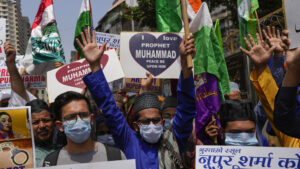
Is it really possible to prevent the spread of religious radicalisation? Scholars and thinkers often argue that education and representation is one way to combat it. But haven’t the world seen that the masterminds of these attacks are graduates of renowned universities, for instance, “In May 2010, Faisal Shahzad hoped to kill dozens of pedestrians when he parked his Nissan Pathfinder near Times Square, New York, loaded with improvised bombs. Four months earlier, Umar Farouk Abdulmutallab tried to bring down a trans-Atlantic flight carrying 289 passengers by igniting explosives sewn into his underwear. Last year, Mohammad Youssef Abdulazeez opened fire on two military facilities in Tennessee, killing five soldiers.” Thus, what really needs to be questioned here is what is being unseen and untreated in these ways which is causing the world to suffer, the innocent deaths propagated not only in Asian countries but European countries and America too, with the motive of ‘let my religion prevail’.
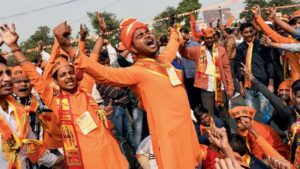
On the contrary there also exist religious groups, as traced in a study conducted by The GREASE Research Project like, Furfura Sharif, in West Bengal, which aims to reduce religious radicalisation in the country by organising cross religion dialogue to undermine radicalisation and promote harmony, peace and brotherhood, as enshrined in the Constitution. They have set up education centres, madrasas, in their region to promote secular teachings by appointing teachers from varied backgrounds. They also have a specialised university-like centre where courses are offered to make selected students the Maulana. Once these students complete their course, they are sent to different parts of the country and globe to preach peaceful teachings of Islam. This is one attempt, which originated roots from a peaceful religious sect which aims to divert religious extremism and radicalisation. Other organisations, Ahle Sunnatul Jamat Organisation, which was recently founded in the southern Bengal too aims to pacify the violence and halt the penetration of religious extremism in the country. Apart from religious activities, they regularly engage in charitable acts to promote ethical notion of humankind.
As apparent it is, the way terrorism is perpetuating in some or the other way in regions across the world, there are also pacifying networks who are amplifying feelings and notions of peace and prosperity. It is the duty and obligation of political leaders to control such devastating situation, in an attempt to witness the ideal notions enshrined in the constitution. The modern era terrorists are better educated and far more resourced due to emerging globalisation and less barriers. Thus, for a larger benefit, it is time for South Asia’s political leadership to form a united front against all forms of religious extremism as south Asia has been a major victim of such sorts of violence.
Latest Post
- Ascriptive Identity Outweighs The Ability To Achieve
- Climate Change: The New Reality TV show
- Violence Against Women in Politics in Kenya is An Attack on Democracy
- The Hidden Heroes of Kumartuli: Women Idol Makers and Their Struggles
- Politics of Rape in India: An Altercation Between Justice and Power
- Pakistan faces condemnation for banning Pashtun Tahafuz Movement
- ‘Vice and Virtue’: Continued Codification of Women Right’s Violations in Afghanistan
- Lights Out: Letters I am Still Trying to Pen
- Hundreds protest in Paris in support of Iranian women’s human rights
- US Pledges Support to Boost Bangladesh’s Economic Growth and Opportunities
- Human Rights Groups Criticize Delay in NHRC Chairperson Appointment
- Ethnic Violence Reignites in Manipur: HRW calls for Unity and Protection Amid Rising Tensions
- Kerala Human Rights Commission Condemns Brutal Beating of Madrasa Student in Kannur
- Calcutta High Court Quashes Eviction Notice Against Priyadarshini Educational Society
- Study reveals that over 4.4 billion people worldwide cannot access safe drinking water
- Supreme Court Highlights Judicial Oversight in Criminal Cases Amidst Transition to New Legal Framework
- Karnataka High Court Grants Bail to accused in Tumakuru Assault Case
- UK has voiced increasing concerns regarding human rights abuses in Sri Lanka
- Uttarakhand High Court Grants Anticipatory Bail to accused in Assault Case
- Allahabad High Court Grants Conditional Relief in Abduction Case, Orders Age Determination Test
{"ticker_effect":"slide-v","autoplay":"true","speed":3000,"font_style":"bold-italic"}
[arrow_forms id=’1117′]




